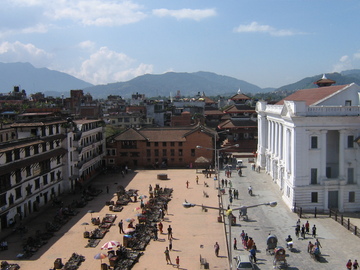
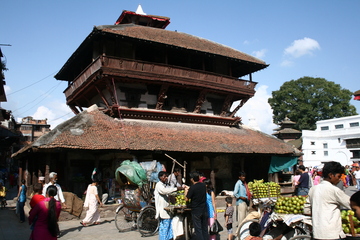
Durbar Square in back on right
Pavilion of Wood, c. 12th c.
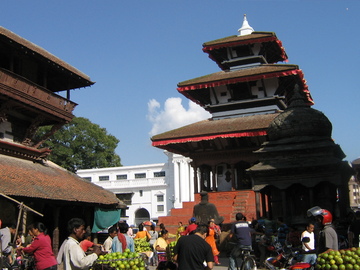
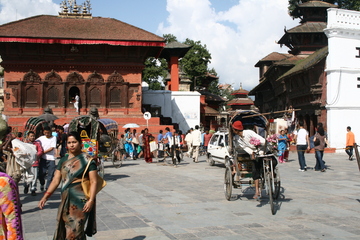
looking towards Makhan Tole
Kathmandu (2)Durbar Square |
 |  |
| Basantapur Square, Durbar Square in back on right | Kasthamandap, Pavilion of Wood, c. 12th c. |
 |
 |
| Maju Deval, a Shiva temple | Shiva-Parvati Temple (left) looking towards Makhan Tole |
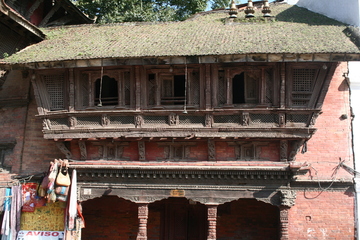 | 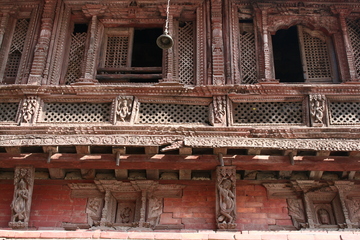 |
| Baghwati Temple, in the Newari style | Wood carving around windows on the Baghwati Temple |
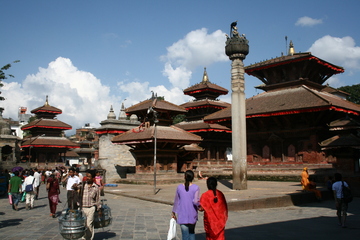 | 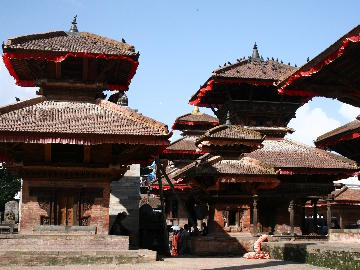 |
| Entering Makhan Tole | Pagodas in Makhan Tole |